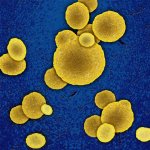Use of Less Invasive, Imaging-Guided Biopsies on the Rise
Biopsy developed into an invaluable diagnostic tool in many organ systems. Advanced imaging technologies have helped shift biopsy techniques away from more invasive approaches toward imaging-guided percutaneous or through the skin techniques, according to a new study appearing online and in the September print edition of the journal Radiology.



















